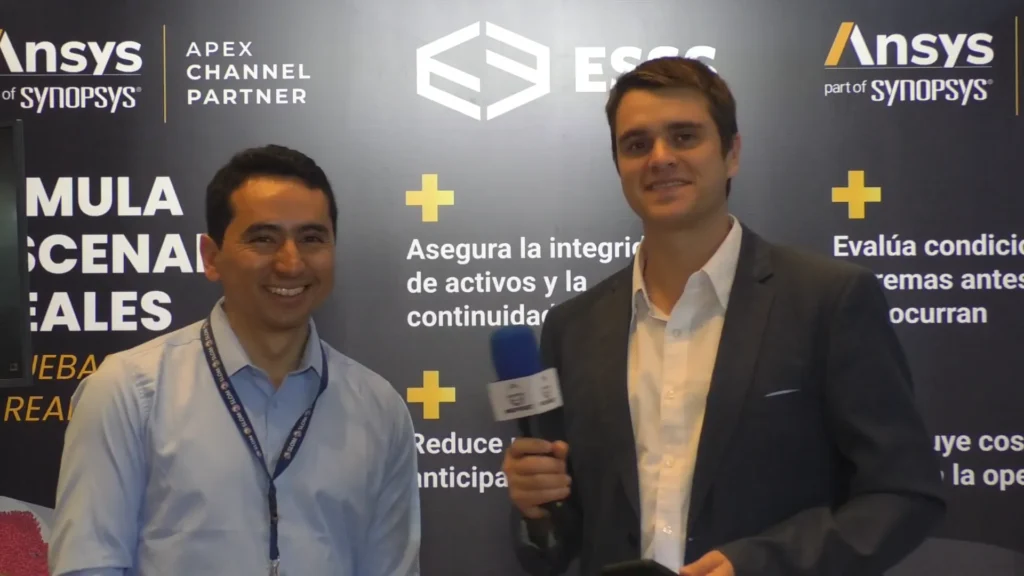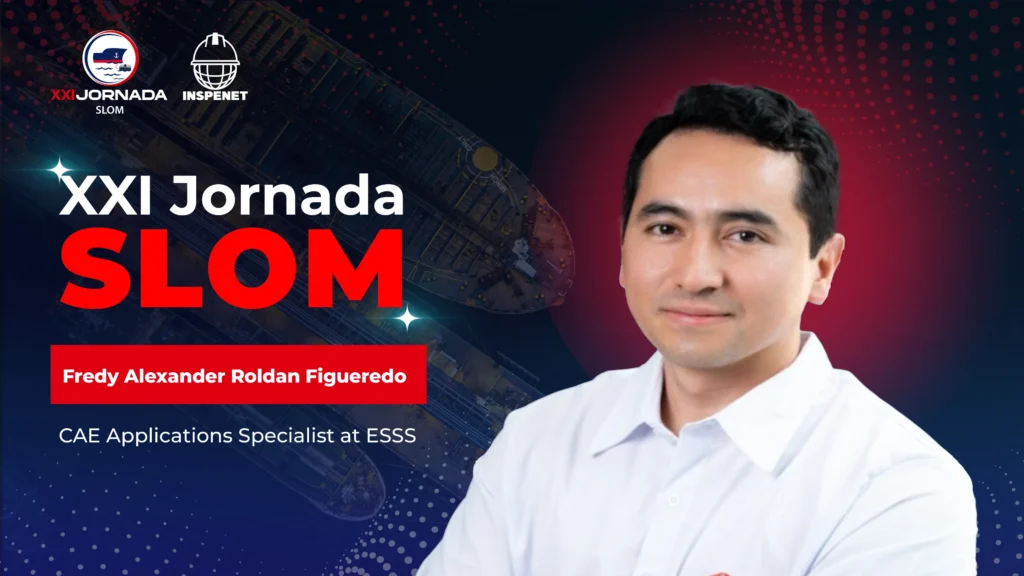Computational simulation in energy: case studies and trends
During the SLOM 2025 event, Fredy Alexander Roldan Figueredo, CAE applications specialist at ESSS, clearly shared the current and future path of computational simulation in the energy industry, especially in marine terminals and storage tanks. With presence in Latin America and Southern Europe, ESSS acts as an official ANSYS channel and stands out for implementing advanced modeling and simulation solutions for critical operating environments.
Simulate to prevent failures and extend asset life
Computer-aided engineering now makes it possible to virtualize industrial assets, such as tanks or marine terminal systems, by subjecting them to simulations that replicate real physical and environmental conditions. This makes it possible to detect potential failures before they occur, optimize designs and ensure that operations remain within regulatory and structural limits.
Roldan explained that these simulations help to extend the life of assets and make data-driven technical decisions. In contexts such as oil and gas, where any incident can have a high environmental impact, this approach becomes indispensable.
Success stories in Colombia and Ecuador
In the interview, Fredy mentioned two concrete examples where simulation proved essential for safety and efficiency:
- Colombia: An underwater PLEM was simulated off the coast of Coveñas; thanks to ANSYS, the connections between the PLEM and the pipeline that reaches the coast were analyzed, considering the conditions of the seabed. This analysis allowed the design of a special part to prevent leaks and guarantee mechanical stability.
- Ecuador: A tank with a diameter of more than 90 meters that showed differential settlements was analyzed and, by simulating this structural behavior, it was possible to validate that the tank could continue to operate without risk, despite the loss of verticality.
From virtual models to real-time digital twins
The natural advancement of simulation is its integration with real-time operational data. Roldan referred to the ability of ESSS to build virtual models that evolve to digital twins, enabling diagnostics and predictions throughout the life cycle of a well or piece of equipment.
This combination makes it possible to predict behavior under different operating scenarios, improve preventive maintenance and act more accurately in critical conditions.

Hybrid digital twins: data and simulation combined
Among the trends highlighted, Fredy talked about hybrid digital twins that combine physical simulation with statistical models operated by machine learning algorithms and artificial intelligence. This convergence significantly improves the accuracy of the models and allows for predictive process optimization.
This trend has been reinforced by strategic moves such as the acquisition of ANSYS by Synopsys, seeking to offer an integrated chain from microchips to industrial infrastructure.
Final perspectives
In contexts where failure is not an option, computational simulation becomes an essential tool to plan, optimize and operate with confidence. Cases such as those presented at SLOM 2025 reflect how ESSS connects world-class technology to local challenges in the energy and maritime industries.
For more content about SLOM 2025, please visit our LinkedIn profile.
Source: Inspenet.


